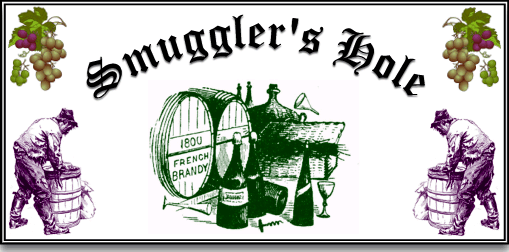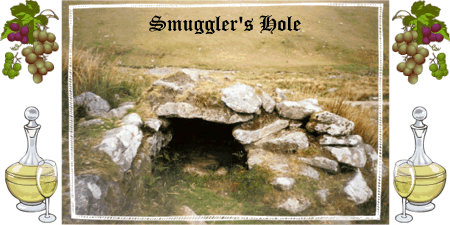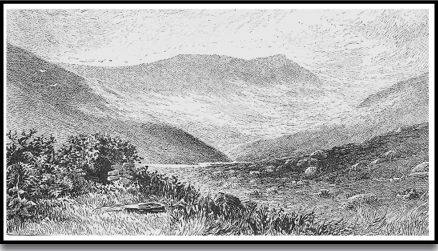
High up on the valley of the river Erme is a small stream that tumbles down the northern flank of Stalldon. This stream is known as the Downing’s House Brook, nothing strange about that. If you walk up the brook you will just see evidence that the old tinners have been to work, there are spoil heaps and piles of boulders, nothing strange about that. However, if you walk down the brook you will see a small hut-like structure known as a beehive hut cache and the reason you would not have spotted it on the way up is that the back of the ‘hut’ has been camouflaged to like like an overgrown mound. This little tinner’s store is known as Downing’s House or more commonly the ‘Smuggler’s Hole’.

Tradition dictates that at one time this little hut was used to store illicit or contraband spirits. There is little evidence of this but one strange thing is that just above Smuggler’s Hole is a shallow crossing place called – ‘Tinker’s Bridge? Whether this is a personal name or descriptive element nobody knows but tinkers and smugglers – just maybe.
Page, in his book – The Rivers of Devon, 1893, p.170, gives quite a lengthy description of Smuggler’s Hole, eventually arriving at the correct theory:
“If you cross the river you will find close to the mouth of a gully – the first after leaving the wood (Piles Copse) – and ancient beehive hut, the most perfect on the moor. How old it is I cannot say, but there is little doubt that it was once the abode of a miner – Phœnician (if he were ever here), Celt, Jew, or Christian no man knoweth – for both the banks of the little stream flowing down the gully, and those of the Erme itself, are littered with the refuse of tin works. Whoever lived here must have been either a dwarf or a hermit doing penance, for the interior is only about six feet across, and three feet six inches high. As for the doorway, I could not even crawl in decently á la Esquimaux, but was fain to wriggle in ventre á terre. This little building is of course built of granite, roof and all; and the top of the dome still appears to be overlaid with turf, from the heather sprouts so thickly that, to those unaccustomed to search for antiquities, the dwelling might very well pass for a heathery mound. There is a splendid view down stream of Sharp Tor, towards which the Erme winds with many a gleam and dash of broken water. On the hillside behind are numerous and large hut basements – so very much larger than the building below that the thought has occurred to me whether the ancient miners did not use it as a tool-shed.”

A well camouflaged Smuggler’s Hole -1893.
Smuggler’s Hole is but one of many tinner’s caches to be found on Dartmoor, the larger ones are also known as ‘Beehive Huts’ due to their skep-like appearance. These small shelters were used to store the tinner’s tools, ingots, and possibly with the larger ones, to afford some brief, temporary shelter. They are said to date from the medieval period and were usually built near to the stream works There are other examples of moorfolk using deserted huts such as the old peat cutters hut, Moute’s Inn.
 Legendary Dartmoor The many aspects past and present of Dartmoor
Legendary Dartmoor The many aspects past and present of Dartmoor
